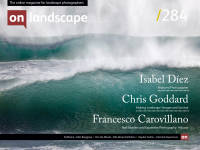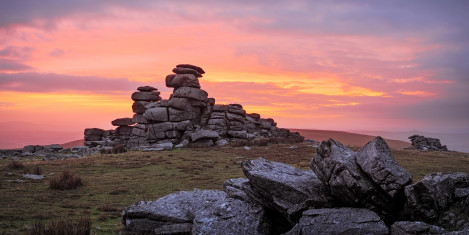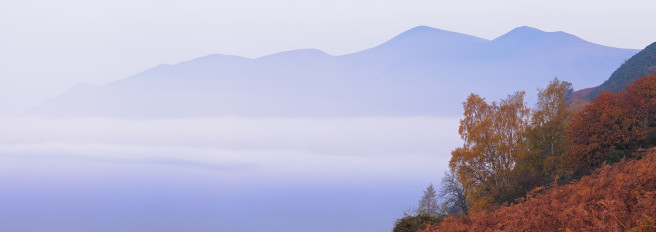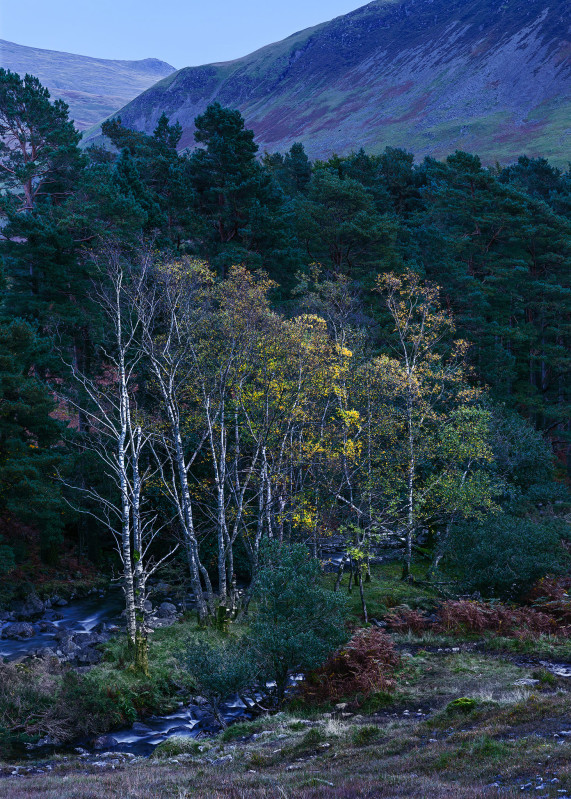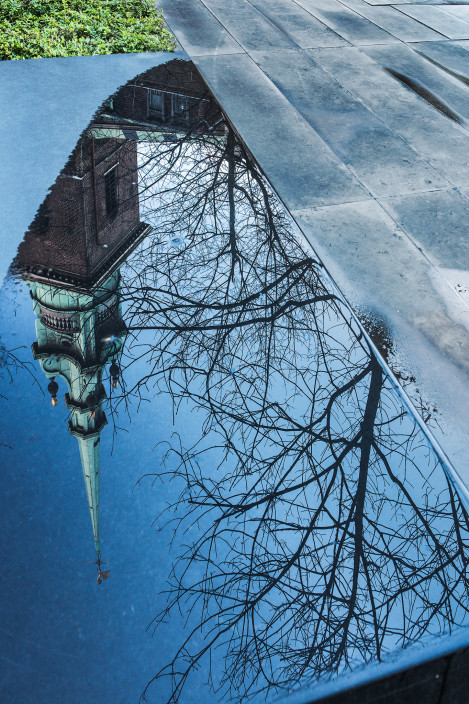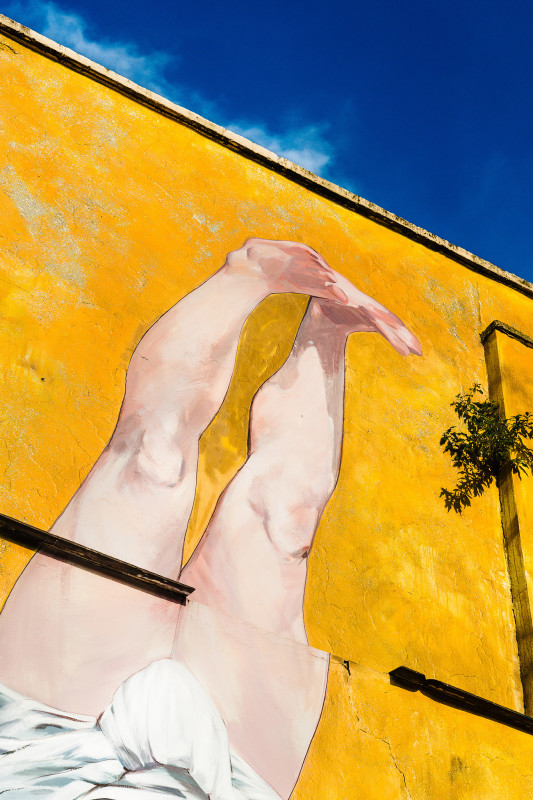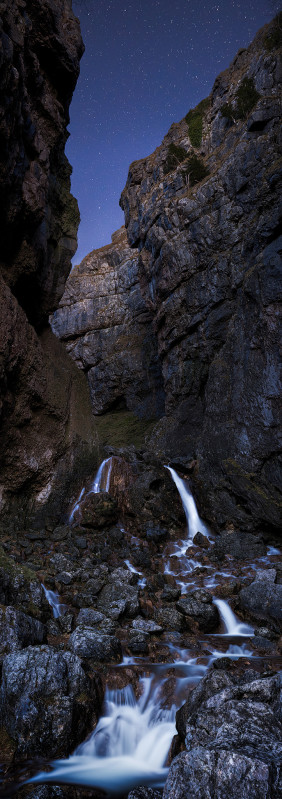Systematic and speculative reasoning

Chris Goddard
Chris Goddard is a keen amateur landscape photographer from south Wales. Between raising a family and a full time job he enjoys making images of Britain’s beautiful landscape. His website can be found at
Like a hunter [a photographer] must place themselves in a location that will allow them to take advantage of a situation that has yet to develop ~Colin Prior
For humanity's entire existence, bar the last century or so, we were restricted to gazing up with wonder at the night sky from ground level. What a view that would have been - no aeroplanes, no satellites, no light pollution. On a clear night, the skies would reveal the planets, the stars, and the Milky Way with such clarity and beauty, the likes of which today you can only see in places far from the light polluting effects of modern civilization. Now, we routinely fly around the globe, leave Earth’s gravity, inhabit space and even safely land objects on other celestial bodies like Mars and the Moon. Recently, the Perseverance Rover on Mars successfully created pure oxygen by splitting the carbon dioxide from Mars’ thin atmosphere into its constituent parts. An experiment that will pave the way for the human habitation of our closest planet.
In just 200,000 years, we have gone from hunting and gathering in migrating tribes and bands that occupied the savannas of a single continent - Africa, to sedentary agricultural and technologically advanced societies that occupy every continent on Earth. The prospect of inhabiting other worlds, like Mars, is very much on our horizon, and some of the most distant objects in the Solar System – such as Pluto and its orbiting body - have been viewed, up close, by probes such as NASA’s New Horizons. Interesting times.
On the grand scale of things, this progress is all very recent. If you compress the Earth’s entire history into a day, we have had the pleasure of wandering this planet for less than two minutes as modern humans. Cities have existed for just 1/10 of a second. Of course, all this progress hangs in the balance.
Worlds Apart
Our brains are geared up to deal with a very different world to the one in which we inhabit today. Take food as an example, we can obtain certain foods like sugar and fat very easily in today’s world; just a quick trip to the local shop and some money is all it takes. However, sugars and fats were exactly the kinds of foods that were most difficult to obtain in our ancestral past. The desirability and readiness with which they are available today, compared to how unavailable they were in the past, has the unfortunate side-effect of nudging us toward over-consumption in a world where these foods are easy to obtain. An old brain circuit that certainly helped our ancestors survive in times of scarcity but is no longer beneficial in a world of abundance.
Evolutionary psychologists use the term ‘mismatch theory’ to describe the problem between behavioural patterns that led to higher survival rates in the past, and our modern lives, where those same behaviours no longer serve quite the same benefit. On the contrary, those behaviours can be detrimental, as seen by the global statistics regarding obesity and diabetes. In other words, mismatch theory refers to evolved traits that were once advantageous but are now maladaptive because our environment has changed so much and so quickly over the course of the last 10 millennia or so. This does mean that the speed of human evolution is far too slow at making the necessary changes to keep up with these dramatic environmental shifts, hence the growing 'mismatch'.
Another area where mismatch has a detrimental effect on humanity is in our capacity as information gatherers and interpreters. There has never been as much information in the world as there is today, thanks to global networking in the form of the World Wide Web and the ubiquity of technologies like the mobile phone. We are saturated with information. Of course, we have a preference to feel good rather than bad, and so we seek out information that affirms our ideas about the world, about ourselves, and about our group. Unfortunately, this can often be at the expense of information that might be more accurate but of less interest, less entertainment value, or less outrage. We find emotive stories easier to follow than facts, and we are suckers for advertisements and other types of persuasive messaging. Social media poses a particular problem, especially in politics, where we can easily be targeted with tailor made ‘memes’ designed to foster powerful emotional states like anger or disgust toward certain people and groups. Today’s world is so different to the one from which we all emerged that the word ‘mismatch’ in mismatch theory seems to understate the problem. Perhaps ‘chasm theory’ might be more apt.
Despite these problems, and I could go on (…and on), one of our most successful traits as a species is our brain's remarkable capacity for adaptability and change. We did not evolve to read or write, ride a bicycle, drive a car, or fly a plane. Evolution by natural selection did not select groups of genes in order to make us good at playing computer games, competing in sports or wielding a camera to make photographs and yet, as a species, some of us are very good at doing these things. So good it seems that you could say that it comes ‘naturally’ to us. What is it that allows us to be so adaptable and subsequently so different to all the other species on this planet?
The Art of Tracking
It is obvious that the human mind is an extremely powerful tool given the myriad ways that humanity has changed the Earth’s environment, but is there anything specific that can be identified, something that might reveal how we have come to think and behave so differently? And can this be related to an activity such as landscape photography?
The last few decades have seen much progress in the sciences that might help explain the thought and behavioural differences that demarcate humanity from other animals. Much of this research concentrates on the minutiae of what is going on in the brain, the ‘nuts and bolts, ’ so to speak. However, I think the work in burgeoning fields like Evolutionary Psychology, and more specifically, that of anthropologist Louis Liebenberg to be of particular interest and importance due to the generality and reach of their explanations; ‘generality’ being an aspect I think to be extremely important to the human mind.
Liebenberg looks to the lives and skills of hunter gatherers for answers, specifically their abilities in finding and catching prey and evading predators. He also makes a distinction between two different modes of thought: systemic reasoning and speculative reasoning in aid of these important survival objectives that all our ancestors faced. He says, in his paper, Tracking Science (Liebenberg. L, 1990 The Art of Tracking: The Origin of Science), that ‘’In easy tracking terrain, trackers may follow a trail simply by looking for one sign after the other, but, in difficult terrain this can become so time-consuming that they may never catch up with their quarry’’. He goes on ‘’instead of looking for one sign at a time, the trackers imagine themselves in the position of their quarry in order to anticipate the route their quarry may have taken. They then decide in advance where they can expect to find signs instead of wasting time looking for them. To construct an animal’s activities, specific actions and movements must be seen in the context of the animal’s whole environment at specific times and places’’.
Liebenberg points out that hunter gatherer tribe members make routine use of both systematic and speculative reasoning and that, when combined, are powerful forms of logic that allowed our ancestors to consistently outsmart their prey. Systematic reasoning is straightforward, it involves the identification of signs and knowing that those signs relate to predictable things in the world.
By making novel predictions, that is, to speculate about the future, coupled with an intimate knowledge of the animal and its environment, one can form a testable idea (also known as a hypothesis). Tracks, whilst obvious in places, may be missing entirely in other areas, they are only a partial, and over time - a diminishing record of an animal's behaviour. If you know, there are wildebeest around because you have identified some partial tracks (systematic reasoning) and that it is approaching the middle of the day, putting yourself in that animal's mind might suggest to you that it will be seeking shade at this point in time because of the heat from direct sun exposure (speculative reasoning). The hypothesis ‘this animal is nearby, likely in shade’ could be made and explored. In addition, this new hypothetical piece of information can be shared with other tribe members and tested by visiting nearby shaded areas leading to confirmation or refutation of their original hypothesis.
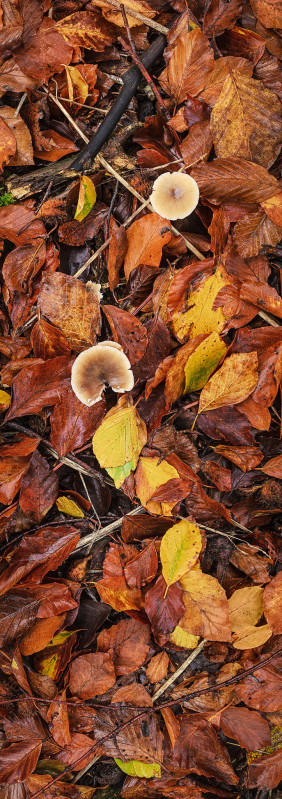 Liebenberg says, ‘’such a reconstruction [about the animal’s behaviour] will contain more information than is evident from the tracks and will therefore be partly factual and partly hypothetical.’’ Obviously, as you track, more information is gathered, Liebenberg states that ‘’hypotheses may have to be revised or substituted for better ones’’. Modern science that is – the creation of a testable hypothesis to predict a novel fact about the world, although much more refined today, is dependent on such modes of thinking.
Liebenberg says, ‘’such a reconstruction [about the animal’s behaviour] will contain more information than is evident from the tracks and will therefore be partly factual and partly hypothetical.’’ Obviously, as you track, more information is gathered, Liebenberg states that ‘’hypotheses may have to be revised or substituted for better ones’’. Modern science that is – the creation of a testable hypothesis to predict a novel fact about the world, although much more refined today, is dependent on such modes of thinking.
Thinking systematically might tell us that the Sun rises in the East and sets in the West due to its repeating pattern, but it will not tell us why that pattern occurs. It is a creative science, that is, speculative reasoning via the use of one’s imagination coupled with the capacity for refutation and revision that allows us to predict that it is the Earth’s rotation on its axis that accounts for the Sun's position at the beginning, and, at the end of the day.
Further speculation will eventually tell us that the Sun's energy is the result of a proton-proton chain reaction that converts hydrogen nuclei into helium, a process that releases enough energy across the Solar System to warm our planet. In theory, there is no limit as to how much we can speculate in this way. Humans have never landed on the Sun. We do not need to go there. Our own speculations and refutations over a long period of time got us to a point where we know that the Sun is a place that we should not visit due to its inhospitable properties.
We may confer with our companions and refine an idea further or reject the idea altogether, moving through the landscape until something else reveals itself to us. And then we try again. Our imagination also plays a big part. The information we gather as we progress through the landscape can be used to make predictions. For example, an image that does not work now might work tomorrow with a change in the angle of the sun, a change in the weather, or the season. When we think like this, we are speculative reasoners (creative scientists) in the way Liebenberg describes.
Surely the interaction between these two modes of thought – systematic and speculative reasoning, as a landscape photographer, relies upon the same background processes that our hunter gatherer tribal ancestors used to gain advantages over their quarry and survive while in their landscapes?
Re-purposing the mind
Exaptation is a term used by evolutionary biologists to describe a trait that evolved for one purpose but ended up being used for another that is quite different from its original function. The classic example is bird feathers. They are thought to have originated as an adaptation to help regulate temperature, then they were co-opted for displays, and, eventually, adapted for flight which is now their main purpose. Our brains are another example, as described earlier, we did not evolve to ride bicycles, drive cars, or fly planes; to read, write or create works of art, and yet, after some training, we can adapt the modules in our brain to do these things extremely well.
The psychologist and linguist Steven Pinker argues that a possible answer to the problem of where our tendency for the arts might come from does not lie in specific adaptations for art, music, and literature but rather in the evolved mechanisms of the mind for other purposes that ‘’let people take pleasure in shapes and colours and sounds and jokes and stories and myths’’ (Pinker, 1997, p. 523). Our propensity for the enjoyment of art and the pursuance of an art is likely a non-adaptive by product of a multitude of specific mechanisms in the brain that evolved for other purposes. When locating ripe fruit, for example, physical and mental adaptations for colour vision are going to help; furthermore, we are more likely to gather that fruit if doing so produces positive emotions, like pleasure. So, when we enjoy viewing an image that contains berries and ripe fruit, are we stimulating those old mechanisms in the brain? Have ‘’humans learned to artificially activate existing mechanisms by inventing cultural products that mimic the stimuli for which the mechanisms were originally designed’’? (David M. Buss 2019, p. 399).
When we develop our artistic skills we are making use of our intellectual faculties with the purpose to produce something that stimulates us in some way, whether it be an enjoyable image, a pleasing sound or an exquisite meal. Steven Pinker says that we might have found ways of ‘’giving [ourselves] intense artificial doses of the sights and sounds and smells that ordinarily are given off by healthful environments’’. He goes on to say that ‘’We enjoy strawberry cheesecake, but not because we evolved a taste for it [specifically]. We evolved circuits that give us trickles of enjoyment from the sweet taste of ripe fruit, the creamy mouth feel of fats and oils from nuts and meat, and the coolness of fresh water.’’ Steven Pinker adds that ‘’Cheesecake packs a sensual wallop unlike anything in the natural world because it is a brew of mega doses of agreeable stimuli which we concocted for the express purpose of pressing our pleasure buttons’’.
As hunter gatherers, we would go out into the wider environment, traverse the landscape, gather resources, and bring them back home. This behaviour would have been fundamental to our survival. Are we doing anything different as landscape photographers? Even the language of photography, as seen in forums, books, and camera club discussions, highlight this: ‘Got the shot!’, ‘Great capture!’ and ‘bagged it!’ are all common parlance in photographic circles. It might be crude, but the behaviour of a photographer and the language that often accompanies it are all governed by ancient, inescapable and implicit systems that operate in the background of our minds. Of course, we should adopt enlightened values like those encapsulated in the phrase ‘leave only footprints, take only photos and kill nothing but time’ in order to minimise any impact that we might have on the environment, but we cannot escape those implicit background processes, no matter how much we try to dress them up.
There has been an attempt to shift the practice and language of photography away from what is perceived as a lesser activity, like hunting, by photography’s more refined practitioners. I can understand this, the thought of likening an art form to that of something that ‘takes’ from the environment can feel distasteful, primitive even, especially in a world where extractive economies can cause huge damage to our environment.
No, mindful photographers are encouraged to make photographs, not take them.
So, next time you feel compelled to go out and track the weather, the position of the Sun, the Moon and the stars; taking into consideration the time, the context and the place; try to anticipate the play of light across the landscape; share your ideas with your companions, generate new ideas according to new information, and, patiently wait for your predictions to come to fruition, all for the purposes of making a landscape photograph, spare a thought for where this motivation and behaviour might come from. Are landscape photographers behaving more like our hunter gatherer ancestors than we might care to admit? Are we just adapting past behavioural mechanisms that were necessary for our ancestor's survival to that of modern life, only in novel ways, as in - photography, sports, the creation of works of art and complex foods?
Could the ‘mismatch’ between our past and present lives be causing us to feel a void that we feel compelled to fill, so we seek out similar behaviours, and instead of those behaviours leading to more food and more survival in today's world, they lead to pictures, healthy competition, and frivolous foods that are enjoyable to eat. Meanwhile, at the same time, these behaviours provide us with fulfilment, happiness and meaning in a world of abundance.
And finally, although these same mechanisms may have led us to art and modern science, they also led us to the Anthropocene, a new epoch in Earth’s history defined by the negative effects of human activities on a global scale. I am, however, optimistic about our future because, given our powerful minds and interconnected lives, solutions to our biggest problems are never too far away; all we need is to realise what the next adjacent idea is and explore that horizon of possibility for the answers that we seek.

